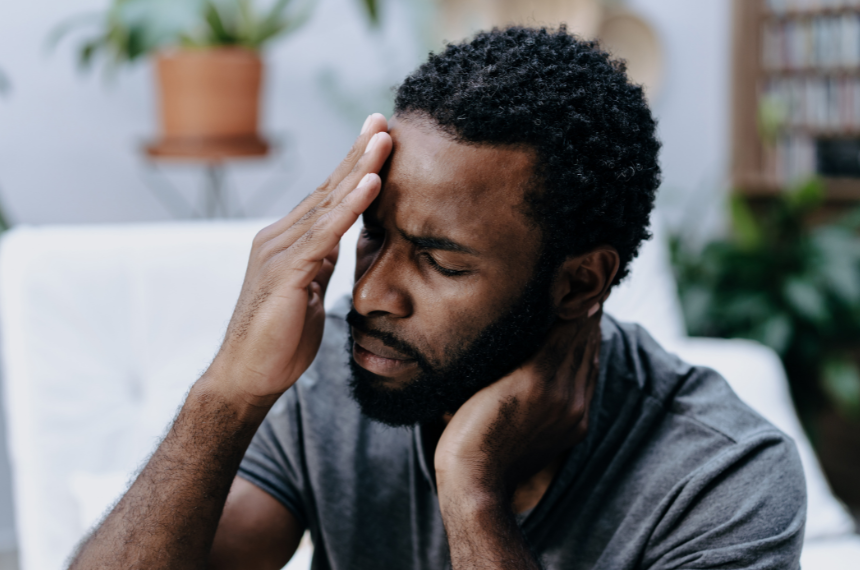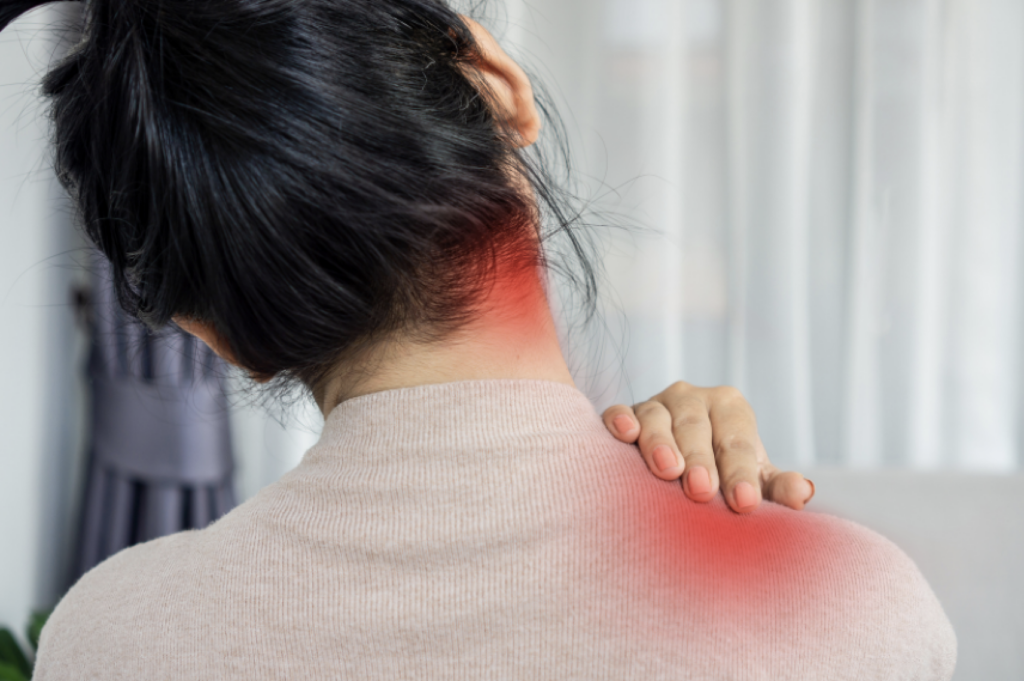Intro
Do you suffer from migraines or headaches that just won’t go away? You may be wondering if a pinched nerve is the cause. While pinched nerves can certainly cause a variety of unpleasant symptoms, it may also be the cause of a type of headache called a cervicogenic headache. These headaches are caused by problems in the neck, and physical therapy is often used to treat them. In this blog post, we’ll discuss whether a pinched nerve can cause migraines and headaches, and how physical therapy and other treatments can help.
Understanding Pinched Nerves
Pinched nerves can be a source of intense pain and discomfort, but many people are still unsure of what exactly a pinched nerve is and how it can lead to migraines and headaches. To understand pinched nerves, we must first delve into the structure of our cervical spine, or the neck region. The cervical spine consists of seven vertebrae, which protect the spinal cord and support the head’s weight.
What are the symptoms of a pinched nerve? When a nerve in the cervical spine gets compressed or irritated, it becomes pinched, leading to a variety of symptoms. These symptoms can range from localized pain and muscle spasms to radiating pain that can extend into the arms and hands. Pinched nerves can also cause secondary headaches, such as tension headaches, occipital neuralgia, or even chronic migraines.
Pinched nerves can occur due to various reasons, including herniated discs, spinal stenosis, or cervical radiculopathy. In some cases, even poor posture or muscle imbalances can contribute to the development of a pinched nerve.
If you suspect that your migraines or headaches may be caused by a pinched nerve, it’s essential to consult a healthcare professional. They may recommend physical therapy, which can include exercises to strengthen the neck muscles, improve posture, and promote relaxation techniques. In severe cases, nerve blocks or medication may be used to manage the pain associated with pinched nerves.
By understanding pinched nerves and their connection to migraines and headaches, you can take proactive steps to alleviate your symptoms and improve your quality of life. Remember, proper diagnosis and treatment from a qualified physical therapist are crucial for finding relief from pinched nerve-related headaches.
The Link Between Pinched Nerves and Headaches
The link between pinched nerves and headaches has shed light on the complexity of headache disorders. When a nerve in the cervical spine becomes compressed or irritated, it can lead to a variety of symptoms, including chronic headaches and migraines.
Pinched nerves in the upper neck region can affect the occipital nerves, which originate from the 2nd and 3rd cervical spine levels after leaving the spinal cord, emerge from the base of the skull, and run up the back of the head. When these nerves are affected, it can result in a condition known as occipital neuralgia. People with occipital neuralgia often experience intense, shooting pain on one side of the head (or both), which can resemble migraine attacks, or can act as a migraine trigger.
Additionally, pinched nerves can cause muscle imbalances and tension in the neck, leading to chronic headaches, or cervicogenic headaches. Poor posture, which can contribute to pinched nerves, also plays a significant role in the development of headaches.
Physical therapy can be an effective treatment for pinched nerves and the associated headaches. Strengthening the neck muscles, improving posture, and promoting relaxation techniques can all help alleviate the symptoms.
Types of Headaches That May Be Caused By Pinched Nerves
Pinched nerves in the neck can cause different types of headaches. One type is cervicogenic headaches, which are characterized by pain that starts in the neck and radiates to the head. These headaches are often described as a dull, aching sensation that may be accompanied by neck stiffness. However, they can also be sharp and severe. They are often one-sided and can be triggered by turning the head. Cervicogenic headaches can be triggered by poor posture, muscle imbalances, or nerve compression.
Another type of headache that can be caused by pinched nerves is occipital neuralgia. This condition occurs when the occipital nerves, which run from the spinal cord to the back of the head, are affected. Occipital neuralgia can cause severe, shooting pain on one side of the head (or both) that resembles migraine attacks.
It’s important to note that pinched nerves can also contribute to tension headaches. Muscle imbalances and tension in the neck can lead to constant head pain that may be accompanied by tightness in the scalp or neck muscles. Pinched nerves can sometimes also be a trigger for episodic migraines and chronic migraines.
To alleviate these types of headaches caused by pinched nerves, physical therapy can be beneficial. Strengthening the neck muscles, improving posture, and practicing relaxation techniques can help reduce the frequency and severity of the headaches. Additionally, treatment options such as nerve blocks (such as cervical facet blocks or cervical epidural injections) or medication may be used in more severe cases.
Other Symptoms of Pinched Nerves that May Contribute to Headaches
Pinched nerves can cause more than just headaches. When a nerve in the cervical spine gets compressed or irritated, it can lead to a variety of symptoms that can contribute to headaches. These cervical radiculopathy symptoms may include numbness or tingling in the arms and hands, weakness in the muscles, and even changes in reflexes. Sharp pains down the arm is typical. This is called cervical radiculopathy. Pinched spinal nerves can affect the functioning of the entire nervous system, which can lead to various symptoms throughout the body.
In addition to these symptoms, poor posture can also contribute to the development of pinched nerves and headaches. When we slouch or have bad posture, it puts additional pressure on the cervical spine, increasing the risk of nerve compression. Maintaining good posture throughout the day, especially while sitting and using electronic devices, can help prevent the development of pinched nerves and alleviate symptoms.
By addressing the other symptoms of pinched nerves and promoting good posture, physical therapy can play a crucial role in treating the underlying causes of headaches. Strengthening the neck muscles, improving overall posture, and incorporating relaxation techniques into your daily routine can help relieve the pressure on the nerves and reduce the frequency and severity of headaches.
How to Treat Pinched Nerves That Are Causing Headaches
If you suspect that your headaches are caused by a pinched nerve, several treatment options can help alleviate your symptoms. One of the most effective treatments for pinched nerves is physical therapy. The goal is to loosen out the neck muscles. A qualified physical therapist can guide you through exercises and stretches that target the neck muscles, helping to relieve pressure on the affected nerves. They can also provide guidance on improving your posture, as poor posture can contribute to the development of pinched nerves and headaches.
In addition to physical therapy, other treatments for pinched nerves include a nerve block and medications. Nerve blocks involve injecting medication into the affected area to provide temporary relief from the pain. Medication, such as nonsteroidal anti-inflammatory drugs (NSAIDs), can help reduce inflammation and alleviate discomfort. Other medications such as Gabapentin, Duloxetine, or Amitriptyline are also commonly used.
It’s important to consult with a healthcare professional or physical therapist to determine the best course of treatment for your specific condition. They can provide personalized recommendations based on your symptoms and medical history.
Remember, the key to treating pinched nerves that are causing headaches is addressing the underlying causes and relieving the pressure on the affected nerves. With proper treatment and management, you can find relief from your symptoms and improve your quality of life.
Prevention Strategies for Pinched Nerves and Headaches
Prevention is key when it comes to managing pinched nerves and preventing headaches. By implementing a few simple strategies into your daily routine, you can significantly reduce the risk of developing pinched nerves and the associated headaches.
First and foremost, maintaining good posture is crucial. Whether you’re sitting at a desk, driving, or using electronic devices, make a conscious effort to sit up straight and avoid slouching. Using ergonomic chairs and adjusting the height of your computer screen can also help promote good posture.
Regular exercise is another important factor in preventing pinched nerves and headaches. Engaging in activities that strengthen and stretch the neck muscles, such as yoga or pilates, can help improve the stability of your cervical spine and reduce the risk of nerve compression.
Incorporating stress management techniques into your daily routine can also help prevent the development of pinched nerves. Stress can contribute to muscle tension and poor posture, which can exacerbate the risk of nerve compression. Practices such as deep breathing, meditation, and regular exercise can help reduce stress levels and promote relaxation.
Finally, paying attention to your body and addressing any warning signs is essential. If you start experiencing neck pain or discomfort, take a break from activities that may be contributing to the issue and consult with a healthcare professional or physical therapist.
By implementing these prevention strategies, you can minimize the risk of developing pinched nerves and the associated headaches, leading to a happier, pain-free life. Remember, prevention is always better than cure, so prioritize your spinal health and take care of yourself.
IF YOU HAVE HEADACHE, MIGRAINE, OR FACIAL PAIN AND ARE LOOKING FOR ANSWERS ON ANYTHING RELATED TO IT, A HEADACHE SPECIALIST IS HERE TO HELP, FOR FREE!
FIRST, LET’S DECIDE WHERE TO START:
IF YOU HAVE AN EXISTING HEADACHE, MIGRAINE, OR FACIAL PAIN DIAGNOSIS AND ARE LOOKING FOR THE LATEST INFORMATION, HOT TOPICS, AND TREATMENT TIPS, VISIT OUR FREE BLOG OF HOT TOPICS AND HEADACHE TIPS HERE. THIS IS WHERE I WRITE AND CONDENSE A BROAD VARIETY OF COMMON AND COMPLEX MIGRAINE AND HEADACHE RELATED TOPICS INTO THE IMPORTANT FACTS AND HIGHLIGHTS YOU NEED TO KNOW, ALONG WITH PROVIDING FIRST HAND CLINICAL EXPERIENCE FROM THE PERSPECTIVE OF A HEADACHE SPECIALIST.
IF YOU DON’T HAVE AN EXISTING HEADACHE, MIGRAINE, OR FACIAL PAIN DIAGNOSIS AND ARE LOOKING FOR POSSIBLE TYPES OF HEADACHES OR FACIAL PAINS BASED ON YOUR SYMPTOMS, USE THE FREE HEADACHE AND FACIAL PAIN SYMPTOM CHECKER TOOL DEVELOPED BY A HEADACHE SPECIALIST NEUROLOGIST HERE!
IF YOU HAVE AN EXISTING HEADACHE, MIGRAINE, OR FACIAL PAIN DIAGNOSIS AND ARE LOOKING FOR FURTHER EDUCATION AND SELF-RESEARCH ON YOUR DIAGNOSIS, VISIT OUR FREE EDUCATION CENTER HERE.



